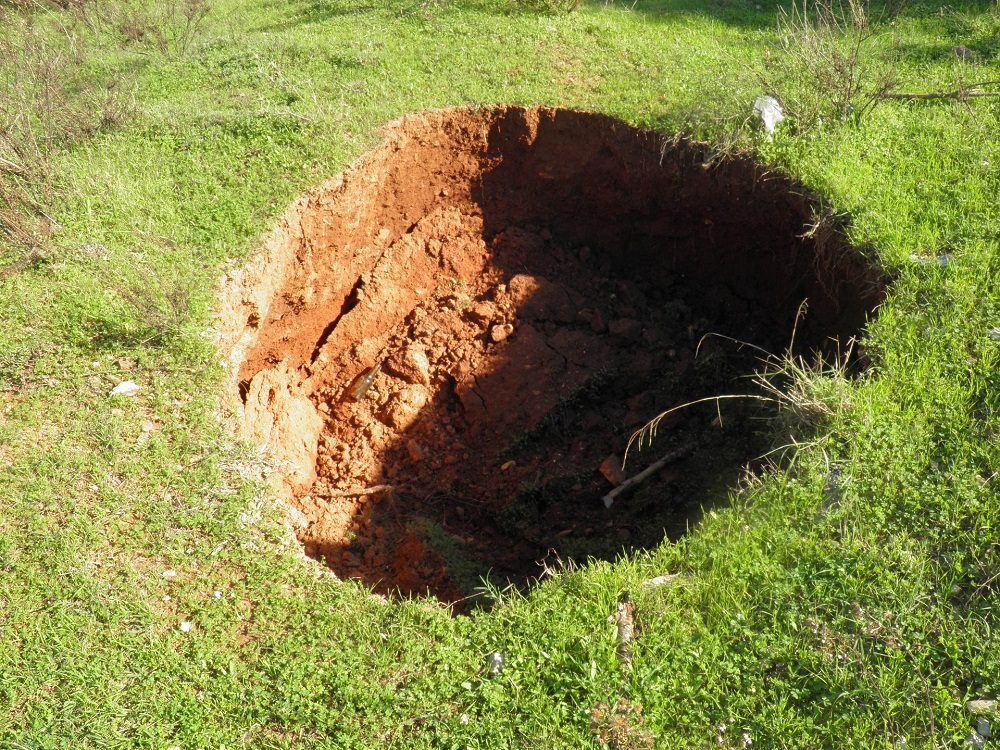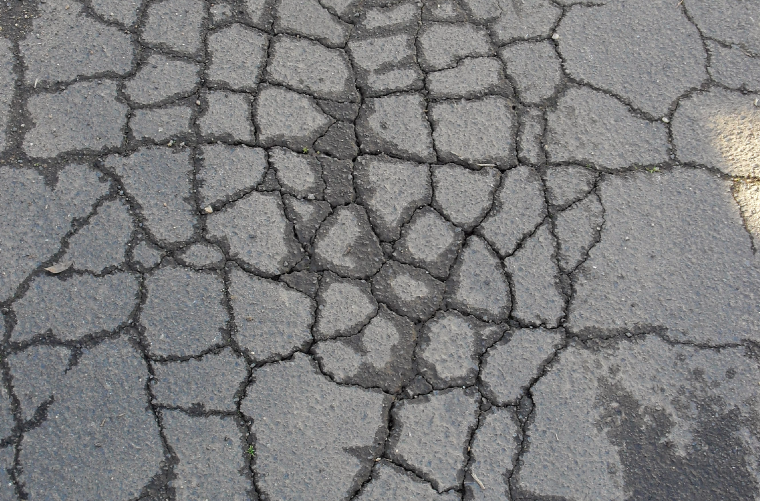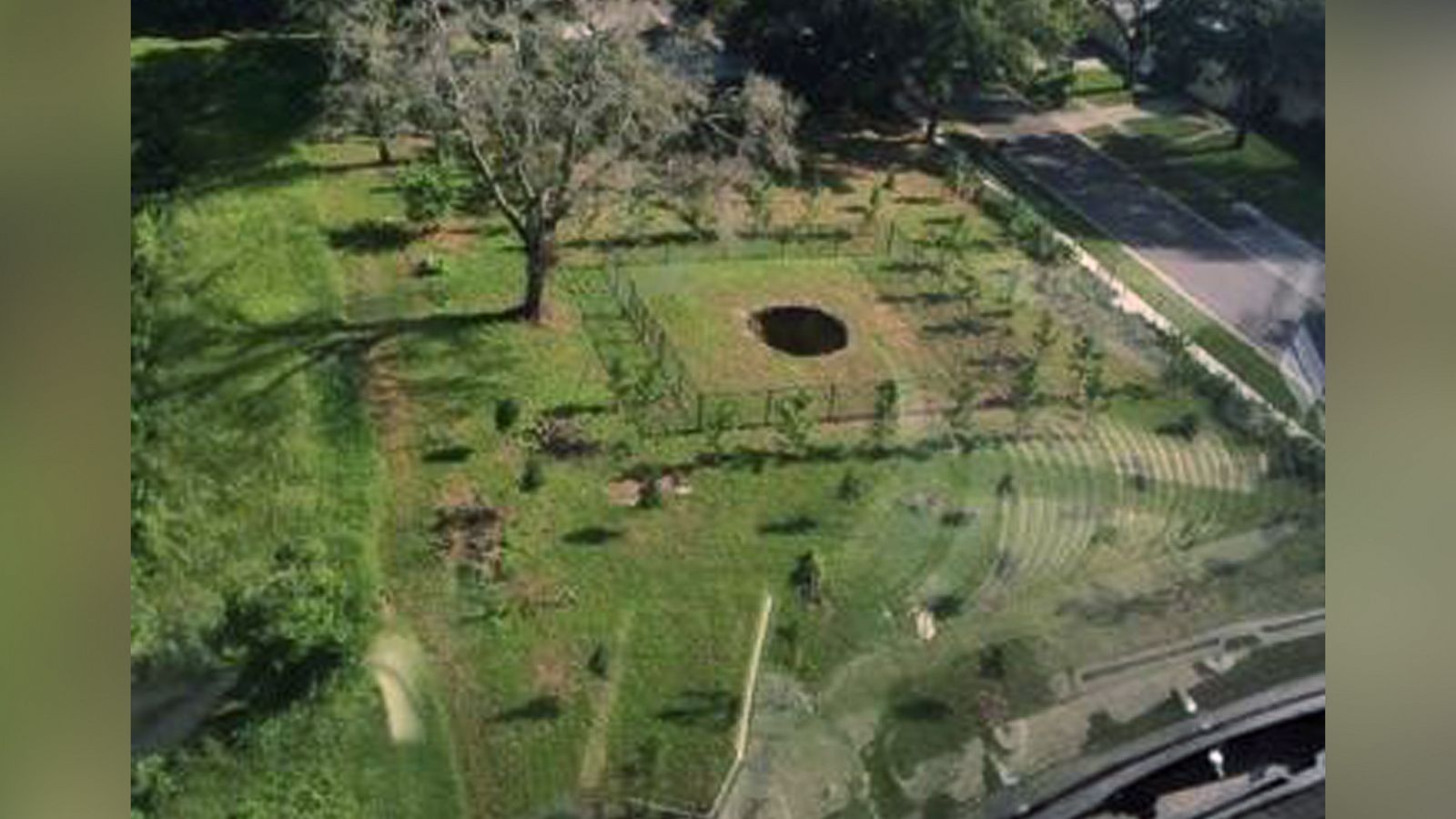Topic how to tell if you have a sinkhole: Discover how to identify sinkholes with our guide, ensuring your safety and protecting your property from unseen underground hazards. Learn the crucial signs and preventive measures today.
Table of Content
- How to tell if you have a sinkhole?
- Common Signs of Sinkholes
- Preventive Measures
- Introduction to Sinkholes
- Identifying Signs of a Sinkhole
- Causes and Types of Sinkholes
- YOUTUBE: Signs of Sinkholes and What to Look For
- Preventive Measures and Safety Tips
- Steps to Take if You Discover a Sinkhole
- Professional Assessment and Repair Options
- Long-Term Monitoring and Maintenance
- Conclusion and Resources for Further Assistance
How to tell if you have a sinkhole?
To determine if you have a sinkhole on your property, look out for the following signs:
- A circular depression in the ground
- Localized subsidence or sinking of the land
- Exposed items such as fence posts and foundations
- Wilting vegetation in a specific area
- Appearance of a hole or depression after heavy rain or during a drought
READ MORE:
Common Signs of Sinkholes
- Visible Depressions: Circular depressions or holes in the ground, especially if they appear to grow over time.
- Subsidence: Areas of the ground that have sunk in relation to the surrounding land.
- Water Accumulation: Unexplained pooling of water in certain areas, which could indicate a sinkhole.
- Structural Damage: Cracks in walls, floors, foundations, and pavement around your property.
- Vegetation Changes: Wilting or dying vegetation in a specific area due to disrupted water drainage.
- Drainage Anomalies: Water disappearing into the ground at an unusual rate, suggesting underground voids.

Preventive Measures
To mitigate sinkhole risks, regularly inspect your property for signs of subsidence and structural damage. Engage professionals for geotechnical assessments if you suspect sinkhole activity. Early identification and intervention can prevent significant property damage and ensure safety.
Contact Information
For immediate concerns or to report potential sinkholes, contact local authorities or a geotechnical expert. Regular maintenance and vigilance are key to managing sinkhole risks effectively.
Introduction to Sinkholes
Sinkholes are natural depressions or holes that appear in the Earth"s surface, primarily due to the dissolution of the underlying carbonate rocks such as limestone, dolomite, and gypsum. Water from rainfall or surface water percolates through the soil, acidifying and dissolving the rock beneath, creating voids. When the support for the land above these voids becomes too weak, it can collapse, forming a sinkhole. These phenomena can range from a few feet to hundreds of acres and can occur gradually or suddenly, posing significant risks to buildings, roads, and safety.
Sinkholes are most common in areas known as karst terrain, characterized by their soluble rock foundations. While they can appear naturally, human activities such as excessive groundwater withdrawal, construction, and alterations to water drainage patterns can significantly contribute to their formation. Recognizing the signs of potential sinkholes is crucial for mitigating damage and ensuring safety. This section will explore the essential knowledge needed to identify and understand sinkholes, their causes, types, and the initial steps for detection and prevention.
- Understanding the geological processes behind sinkholes
- Identifying areas prone to sinkhole formation
- Recognizing early warning signs and symptoms of sinkholes
- Impact of human activity on sinkhole development
- Strategies for sinkhole prevention and mitigation
Through comprehensive understanding and awareness, individuals and communities can better prepare for and address the challenges posed by sinkholes, ensuring the safety of both people and property.

Identifying Signs of a Sinkhole
Sinkholes are a natural occurrence that can cause significant damage to property and pose safety risks. Identifying early signs of a sinkhole can help mitigate these risks. Here are key indicators:
- Visible Depressions or Holes: The appearance of new depressions or holes in the ground, which may expand over time.
- Subsidence: Sudden or gradual sinking of the ground surface, indicating potential voids below.
- Cracks in Structures: New or expanding cracks in foundations, walls, floors, and pavement around your property.
- Water Pooling: The formation of new areas where water pools, which were previously not present.
- Vegetation Distress: Areas where vegetation suddenly wilts or dies, possibly due to a disruption in underground water flow.
- Plumbing Issues: Unexplained plumbing problems or leaks that could indicate shifting ground.
- Windows and Doors: Difficulty in opening or closing windows and doors, suggesting structural shifts.
Recognizing these signs early can be crucial for taking preventative measures or seeking professional assessment to avoid potential hazards associated with sinkholes.
Causes and Types of Sinkholes
Sinkholes are fascinating natural phenomena with specific causes and varied types. Understanding these can help in identifying and mitigating risks associated with them.
- Causes of Sinkholes: Most sinkholes occur because of the dissolution of soluble rocks beneath the surface, such as limestone, dolomite, or gypsum. Rainwater, often acidified by carbon dioxide in the air, seeps into the ground, dissolving these rocks and creating voids. Over time, the land above these voids can collapse, forming a sinkhole.
- Natural Erosion: Natural processes of erosion can also contribute to the formation of sinkholes, especially in areas with underground rivers or fluctuating groundwater levels.
- Human Activity: Activities such as drilling, mining, construction, and excessive groundwater pumping can trigger sinkhole formation by altering the natural water drainage patterns or by loading the surface with excessive weight.
Types of Sinkholes:
- Solution Sinkholes: Formed when rainwater dissolves the rock surface directly, creating a depression.
- Cover-collapse Sinkholes: Occur when soil or sediment above a void collapses into it, often suddenly and without warning.
- Cover-subsidence Sinkholes: Develop gradually as soil slowly fills in the voids below, leading to a depression at the surface.
Identifying the causes and types of sinkholes is crucial for understanding their impact on the environment and for taking appropriate preventive measures.

Signs of Sinkholes and What to Look For
\"Sinkholes can be fascinating natural phenomena! Explore the wonders of sinkholes and uncover the science behind them in this captivating video. You don\'t want to miss this amazing display of nature\'s power!\"
Video: Sinkholes Warning Signs to Look For to Protect Homes
\"Don\'t miss this important warning video that could potentially save lives! Learn about crucial safety tips and how to protect yourself and your loved ones from various dangers. Stay informed and stay safe!\"
Preventive Measures and Safety Tips
Preventing sinkholes and ensuring safety around them involves understanding their causes, identifying signs early, and taking appropriate measures. Here are practical tips and preventive measures to minimize risks:
- Regular Inspections: Conduct regular inspections of your property for signs of sinkholes, including depressions, sudden holes, or cracks in the ground.
- Avoid Overwatering: Excessive watering can accelerate the dissolution of underlying soluble rocks, increasing the risk of sinkholes. Use water judiciously.
- Proper Drainage: Ensure proper drainage of rainwater away from your property to reduce water infiltration into the soil that can lead to sinkholes.
- Limit Heavy Structures: Avoid placing heavy structures in areas prone to sinkholes to prevent triggering their collapse.
- Professional Assessments: If you suspect the presence of a sinkhole or observe warning signs, consult with a geotechnical engineer or a professional experienced in sinkhole assessment and repair.
- Land-Use Planning: In areas known for sinkhole activity, consider land-use planning and building codes that take into account the risk of sinkholes.
- Emergency Plan: Have an emergency plan in place if a sinkhole opens up on your property or nearby, including evacuation routes and emergency contacts.
By taking these preventive measures, you can significantly reduce the risk of sinkholes and ensure the safety of your property and loved ones.
Steps to Take if You Discover a Sinkhole
Discovering a sinkhole on your property can be alarming. Immediate and correct actions are crucial to ensure safety and mitigate damage. Follow these steps if you encounter a sinkhole:
- Ensure Safety: Keep a safe distance from the sinkhole. Barricade the area if possible to prevent accidents.
- Contact Authorities: Inform local authorities or emergency services about the sinkhole. They can provide immediate assistance and advice on safety measures.
- Evacuate if Necessary: If the sinkhole poses a direct threat to your home or safety, evacuate the area and seek a safe location.
- Consult Professionals: Contact a geotechnical engineer or a sinkhole repair specialist to assess the sinkhole and recommend remediation actions.
- Notify Your Insurance Company: Report the sinkhole to your insurance company to understand your coverage and start the claim process.
- Document Everything: Take photos and keep detailed records of the sinkhole and any damage for insurance claims and professional assessments.
- Avoid Water Accumulation: Redirect water away from the sinkhole to prevent it from enlarging due to erosion.
- Monitor the Sinkhole: Keep an eye on the sinkhole"s size and any changes in the surrounding area, and report these to professionals.
Following these steps can help manage the situation effectively, ensuring the safety of everyone involved and the integrity of your property.

Professional Assessment and Repair Options
If you suspect a sinkhole on your property, it"s imperative to seek professional assessment immediately to ensure the safety of your property and its occupants. Here"s what you need to know about professional sinkhole assessment and repair options:
- Geotechnical Engineers: These professionals specialize in the science of soil and rock mechanics and can accurately diagnose the presence of a sinkhole and its potential impact on your property.
- Sinkhole Verification: The process typically involves a thorough site inspection, geophysical testing, and soil sampling to determine the extent and cause of the sinkhole.
- Repair Methods: Depending on the size and stability of the sinkhole, various repair methods can be employed. These may include grouting, which involves filling the void with a cement-like mixture to stabilize the ground, or underpinning, which strengthens the foundation of existing structures.
- Insurance Considerations: It"s essential to contact your insurance company early in the process. Some policies may cover sinkhole damage and repair, but coverage can vary widely.
- Permitting and Regulations: Repairing a sinkhole often requires permits and must comply with local building codes and regulations. Professional contractors will be able to navigate these requirements on your behalf.
- Long-Term Monitoring: After repairs are completed, ongoing monitoring of the site is crucial to detect any potential reoccurrence or new sinkhole formation.
Addressing a sinkhole is a complex process that requires expertise and precision. Engaging with professionals ensures that the sinkhole is assessed accurately and repaired effectively, safeguarding your property and those around it.
Long-Term Monitoring and Maintenance
Maintaining vigilance through long-term monitoring and regular maintenance is essential in areas prone to sinkholes. This proactive approach can help mitigate risks and ensure safety. Here are steps to ensure effective long-term sinkhole management:
- Regular Property Inspections: Conduct periodic inspections of your property for any signs of new sinkholes or changes in existing ones.
- Monitoring Water Drainage: Ensure that drainage systems are functioning properly to prevent water from pooling and potentially triggering sinkhole development.
- Vegetation Monitoring: Pay attention to changes in vegetation health, as this can be an early indicator of shifting ground or water drainage issues.
- Structural Health Monitoring: Keep an eye on the structural integrity of buildings, roads, and other infrastructure for signs of settling or cracking that could indicate underground voids.
- Professional Consultations: Engage with geotechnical engineers or sinkhole specialists for annual assessments, especially if your area is known for sinkhole activity.
- Community Awareness: Stay informed about sinkhole developments in your area and share information with neighbors to promote community-wide vigilance.
- Emergency Preparedness: Have an emergency plan in place, including evacuation routes and contact information for local authorities and sinkhole repair services.
Through diligent monitoring and maintenance, property owners can significantly reduce the risks posed by sinkholes, safeguarding their investments and ensuring the safety of their communities.
Conclusion and Resources for Further Assistance
Understanding sinkholes and recognizing their signs are crucial steps in protecting your property and ensuring safety. While sinkholes can be a natural part of the landscape, especially in areas underlain by soluble rock, awareness and preparedness can significantly reduce the risks they pose. If you suspect a sinkhole, taking immediate action by consulting professionals is vital.
- Contact local geological surveys or environmental protection agencies for information specific to your area.
- Seek the expertise of a geotechnical engineer or a firm specializing in sinkhole assessment and remediation.
- For insurance questions, consult with your provider about coverage options for sinkhole damage.
- Engage with community resources and neighbors to share information and support each other in sinkhole-prone areas.
Proactive measures, such as regular property inspections and implementing preventive steps, can help manage sinkhole risks. Remember, the safety of your property and loved ones is paramount. By staying informed and prepared, you can navigate the challenges posed by sinkholes with confidence.
Stay vigilant and informed about sinkholes to protect your property and ensure safety. By recognizing early signs and taking proactive steps, you can navigate the risks and secure your home with confidence.

